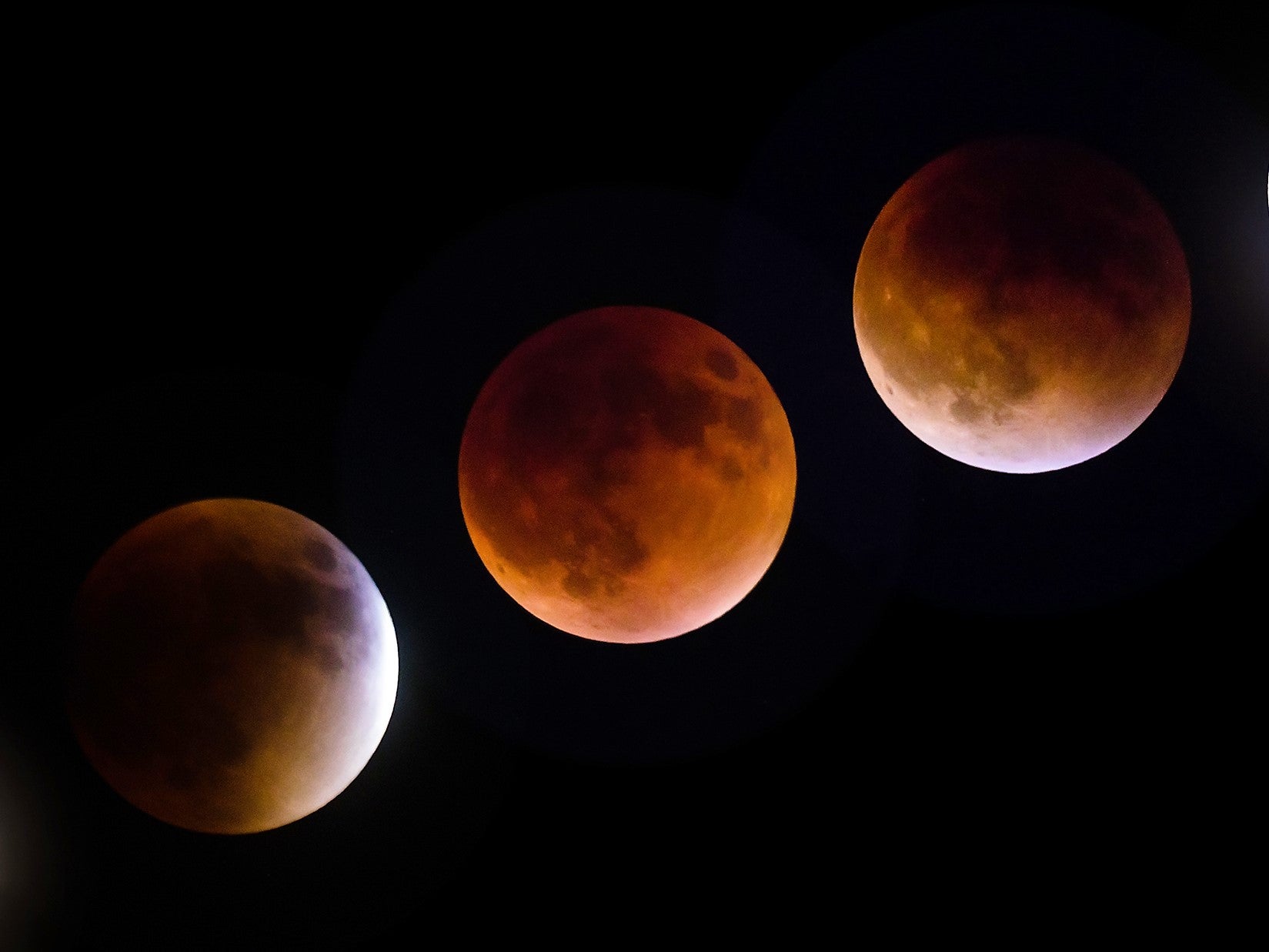Super Flower Blood Moon 2021: What is the meaning behind May full moon’s name?
Rare celestial coincidence earns May’s full moon an unusually long name

Your support helps us to tell the story
From reproductive rights to climate change to Big Tech, The Independent is on the ground when the story is developing. Whether it's investigating the financials of Elon Musk's pro-Trump PAC or producing our latest documentary, 'The A Word', which shines a light on the American women fighting for reproductive rights, we know how important it is to parse out the facts from the messaging.
At such a critical moment in US history, we need reporters on the ground. Your donation allows us to keep sending journalists to speak to both sides of the story.
The Independent is trusted by Americans across the entire political spectrum. And unlike many other quality news outlets, we choose not to lock Americans out of our reporting and analysis with paywalls. We believe quality journalism should be available to everyone, paid for by those who can afford it.
Your support makes all the difference.A double lunar spectacle this week will make the Flower full moon of May extra special, combining the biggest and brightest supermoon of 2021 with the first lunar eclipse in nearly two years.
The eclipse – which is only visible in parts of Asia, Australasia and the Americas – will also give the moon a reddish appearance, earning it the moniker “Blood Moon”.
All of these names and terms combined mean it is referred to by some as the Super Flower Blood Moon, which will peak on 26 May but will be visible for a day on either side.
The “Flower” prefix comes from the name given to it by Native Americans and settlers to North America, with each month’s full moon given a different title that related to the time of year it appeared.
“This full moon was known by early Native American tribes as the Flower Moon because this was the time of year when spring flowers appeared in abundance,” Nasa noted in a blog post.
Different tribes sometimes gave the same moon different names, for example the Anishnaabe Tribe from the Great Lakes gave May’s moon the name Blossom Moon, while the Cherokee Tribe from the East Coast called it the Planting Moon.
The Old Farmer’s Almanac lists the following as the most popular Native American names for each month’s moon:
January - Wolf Moon
February - Snow Moon
March - Worm Moon
April - Pink Moon
May - Flower Moon
June - Strawberry Moon
July - Buck Moon
August - Sturgeon Moon
September - Harvest Moon
October - Hunter’s Moon
November - Beaver Moon
December - Cold Moon
The reason for naming each month’s moon was due to the importance of the lunar calendar among tribes for tracking the seasons.
“The early Native Americans did not record time by using the months of the Julian or Gregorian calendar. Many tribes kept track of time by observing the seasons and lunar months, although there was much variability,” the Almanac explains.
“For some tribes, the year contained four seasons and started at a certain season, such as spring or fall. Others counted five seasons to a year. Some tribes defined a year as 12 Moons, while others assigned it 13. Certain tribes that used the lunar calendar added an extra Moon every few years, to keep it in sync with the seasons.”
Occasionally a year has 13 full moons, such as in 2020. When this occurs, the 13th moon is usually referred to as a “Blue Moon”.


Join our commenting forum
Join thought-provoking conversations, follow other Independent readers and see their replies
0Comments